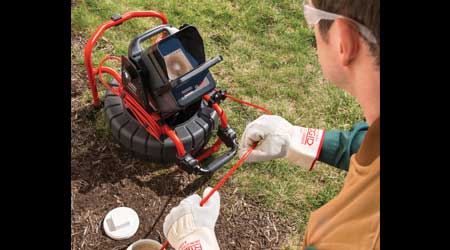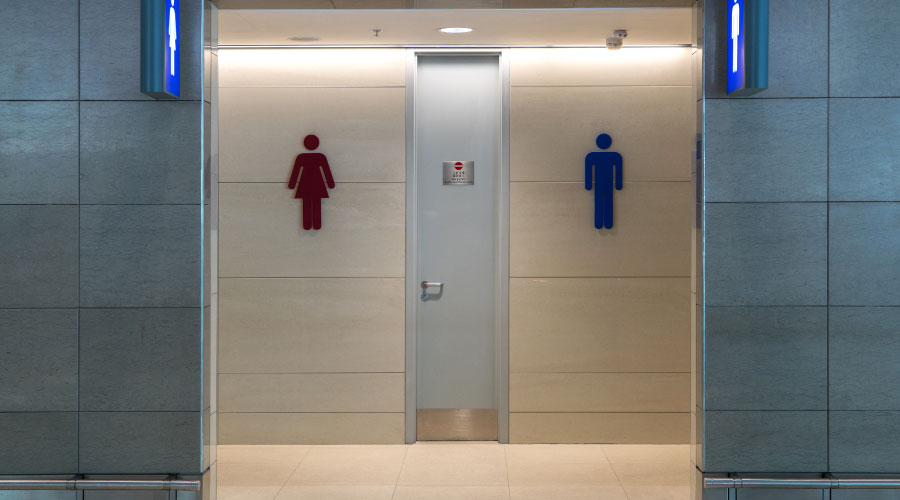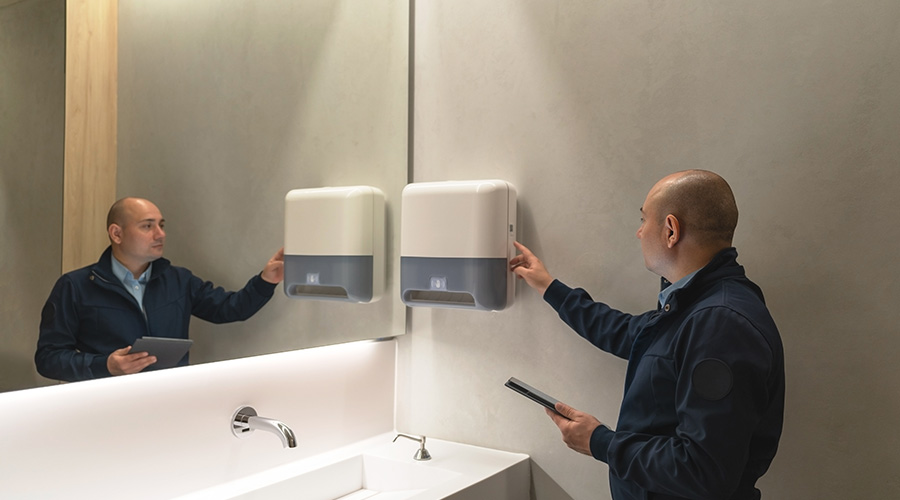 Video inspection has extended the reach and power of technicians in locating and removing blockages in plumbing and piping systems.
Video inspection has extended the reach and power of technicians in locating and removing blockages in plumbing and piping systems.New-Generation Drain Cleaning Tools
Upgrades to traditional equipment put more power and versatility in the hands of technicians
Institutional and commercial facilities cannot run efficiently and safely without efficient, reliable plumbing and piping systems, and maintenance and engineering departments can only ensure these systems perform as intended with effective drain-cleaning equipment.
Successful specification of new-generation drain-cleaning equipment involves understanding key features and functions, as well as intended applications. Armed with this information, managers will be more successful in ensuring front-line technicians have the tools and technology they need to ensure plumbing and piping systems are reliable and efficient.
Building an arsenal
Today’s arsenal of drain-cleaning equipment for most departments includes a combination of water jetters, snakes, augers and sectional and drum machines. Technicians need this equipment to perform preventive drain cleaning and prevent larger problems later and to respond to the emergencies that inevitably occur.
Water jetters. Depending on jetter size, these units apply high-pressure water at 1,350-4,000 psi and a rate of 1.5 gallons per minute (gpm) to clear and flush drains They are effective in pipes up to 4 inches in diameter and typically can reach 150 feet into the pipeline.
The standard water jet nozzle has a small central hole that increases the water velocity and rotates to bore through the blockage and clean the pipe walls. Rear-facing peripheral jets provide the force to propel the nozzle. A combination fitting attached to the head of the jetter’s cable can clear material clogs and plant roots. Hot water up to 140 degrees improves the ability to clear a clog.
For best results, technicians should run water to remove air from the hose before applying pressure with the end of the hose in the pipe. Truck-mounted jetters for larger sewer jobs are self-contained with water tanks and a separate engine to drive the water pump.
Technicians also can use jetters to repair underground sewers without the need for trenching. In this application, the technician uses a video camera on a fiber optic cable to inspect deep in a sewer for blockages and damaged sections. The camera reveals and records the location of roots, debris and damaged walls on a screen. After removing the camera, the technician inserts a 2.2 gpm jetter into the sewer to clear roots and other material. The operator then inserts a plastic sleeve that bridges the damaged sections and produces a repair with no digging or trenching that can have a 50-year performance life.
Snakes. These pieces of equipment used to clean short distances, such as toilet traps, traditionally were available only in manual models. Gradually, the line of manual models has expanded to include powered models.
Technicians still clean short pipe fittings, such as urinal and sink traps, with several manual snakes. But for greater reach, powered models now are available that can clean ¼-inch to 2-1/2-inch-diameter lines. They feature an automatic power feed into and out of pipelines. One model that sits on a floor or tabletop has a sheathed cable to eliminate splash, and it features stands that operators can use to set the unit horizontally or vertically to remove kinks and allow more direct access to the pipeline.
Augers. A functional overlap exists between augers and snakes. Technicians can use both pieces of equipment for nearby clogs by using a flexible cable on ¼-inch and larger diameter piping with flexible tape to feed the head into the drain. Augers also can be used for clogs in sinks, tubs, showers and floor drains. The operator uses a closed-coil head to push the clog through the pipe, while an open-coil head hooks solid objects to remove them.
Sectional and drum machines. Technicians tend to use sectional and drum machines for heavy-duty jobs. They operate in a similar manner but are configured differently. Drum machines have a power feed and a continuous, one-piece, flexible cable that feeds from the drum into the pipe far enough to reach the clog. Different head attachments enable cutting roots, removing soft blockages, removing hard blockages and retrieving solid objects.
Powered sectional machines feature cables that are less flexible. The operator feeds 10-foot sections through the machine into the piping to reach the clog. As one section is fed almost all the way through the machine, the operator couples another section to the first section until enough cable has been fed to reach the clog. Attachments with various diameters fit the inside wall of the pipe and rotate as they move to clean buildup from the walls.
Related Topics:














